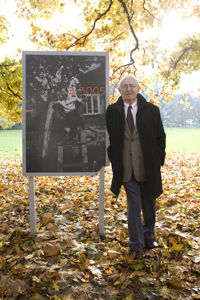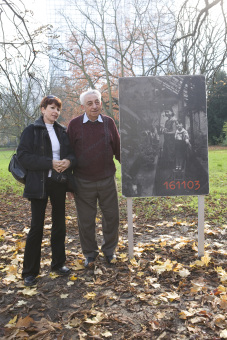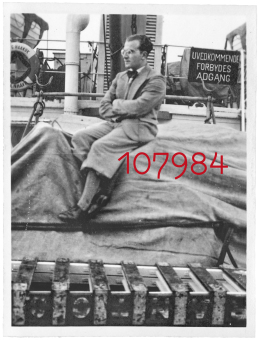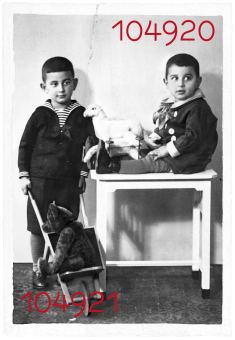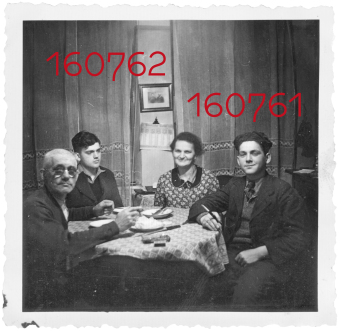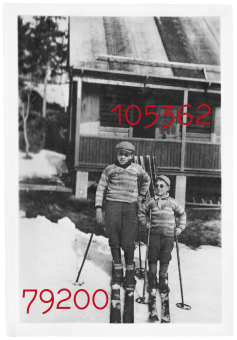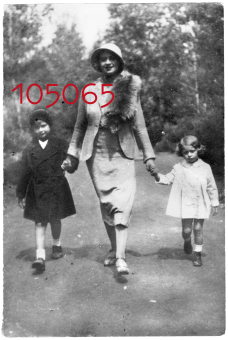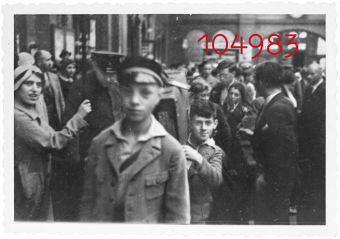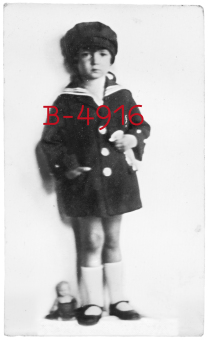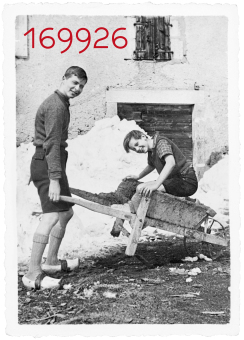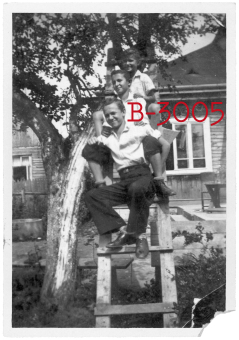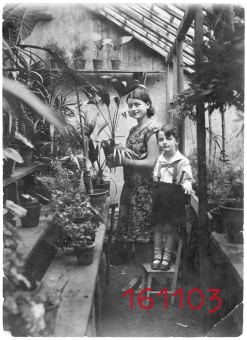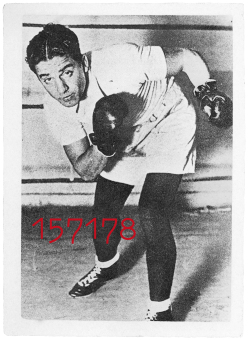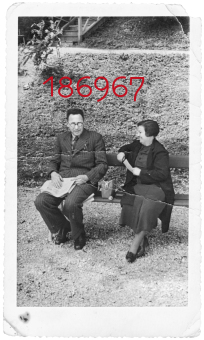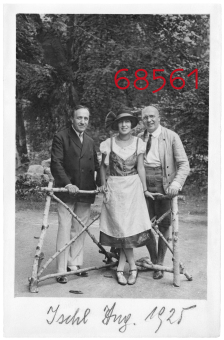Photo Panels in the Park of the I.G. Farben Building
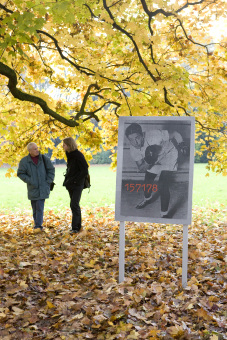
during the opening of the Wollheim Memorial
© Jessica Schäfer
A photo installation in the parkland surrounding the I.G. Farben Building is an eye-catching component of the Norbert Wollheim Memorial. Photographs of people who were deported from every country of Europe to Auschwitz in the 1940s and made to do forced labor for I.G. Farben in the Buna/Monowitz concentration camp were cut into the surface of large metal sheets with an area of about 1 square meter. Portions of these panels are colored black to make the contrasts of the black-and-white photographs more visible.
The prisoner numbers later assigned in the Buna/Monowitz concentration camp to the people portrayed appear in red on the photo panels, visually signalling the break in the everyday scene in the snapshot, and in the life of the prewar era. Each of the panels was placed in one of the existing groves of trees in the park.
In the diversity of their subjects and places of origin, the pictures chosen seek to convey the richness and variety of the “lifeworlds” in Europe that were destroyed by the Nazis’ persecution of the Jews, though the snapshots are incapable of giving even an approximate representation of the people who were murdered and their daily lives. Instead, the photographs in the park prompt a visual identification and offer an emotional approach through the simultaneous familiarity and strangeness of the pictured scenes. The meaninglessness of the photographs for people who know neither the subjects nor anything about them also suggests a general aspiration for an unconscious recognition of these everyday scenes and thus for a “presentness” of the chosen photos’ subjects, and for associative connections with the viewers’ daily lives: a family at the kitchen table; two little boys with their toy; a man in a boxing pose; two young men on skis in front of a cottage; two young men with a wheelbarrow in the snow; an older couple on a park bench, with the man holding a newspaper; a boy with a young woman in a greenhouse.
And yet the crowdedness of the kitchen, the boy’s suspenders, the type of toy, and the shape of the skis indicate that the scenes in these photographs are past history. The inclusion of the subsequent prisoner numbers in red, without comment, gives rise to questions about the lives of the subjects, both those near whom these numbers appear on the photo panels and the others without numbers, who usually are relatives, parents, brothers and sisters. A moment of uncertainty about the reason for the photo panels can generate curiosity and interest in the stories of the people pictured—and in the stories of those whose pictures no longer exist. These life stories of the victims and survivors of Buna/Monowitz form the core of the “information site,” where they are made accessible through interviews with survivors and a dual-language website.
(SD/MN/SP; transl. KL)
Biographies of the People Pictured:



















